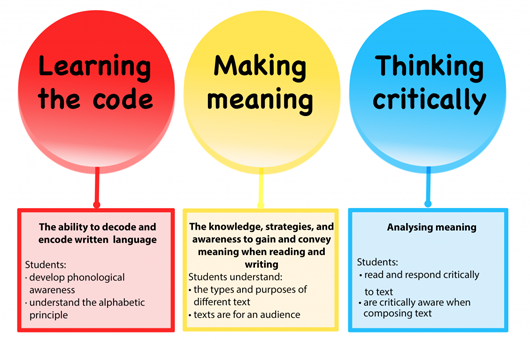Information on literacy acquisition, structured literacy, and the goal of phonics instruction to support teachers' use of the Ready to Read Phonics Plus books.
Literacy is a foundational skill. To be successfully literate, children need to master three key areas of reading and writing: learning the code, making meaning, and thinking critically.

Learning the code
The ability to decode and encode written language. Students:
Making meaning
The knowledge, strategies, and awareness to gain and convey meaning when reading and writing. Students understand:
Thinking critically
Analysing meaning. Students:
The goal of phonics instruction is to help children to learn and be able to use the alphabetic principle. Phonics instruction helps children learn the relationships between the letters of written language and the sounds of spoken language.
As children learn the predictable relationships between sounds and letters, they are increasingly able to apply these relationships to familiar and unfamiliar words. As they do this, they begin to read with fluency.
Inclusive Education: The simple view of reading and literacy acquisition
Find out how to support learners to “crack the code” and build their language comprehension. This gives information about early literacy acquisition, the simple view of reading, and Scarborough’s Reading Rope.
Updated on: 27 Feb 2023
